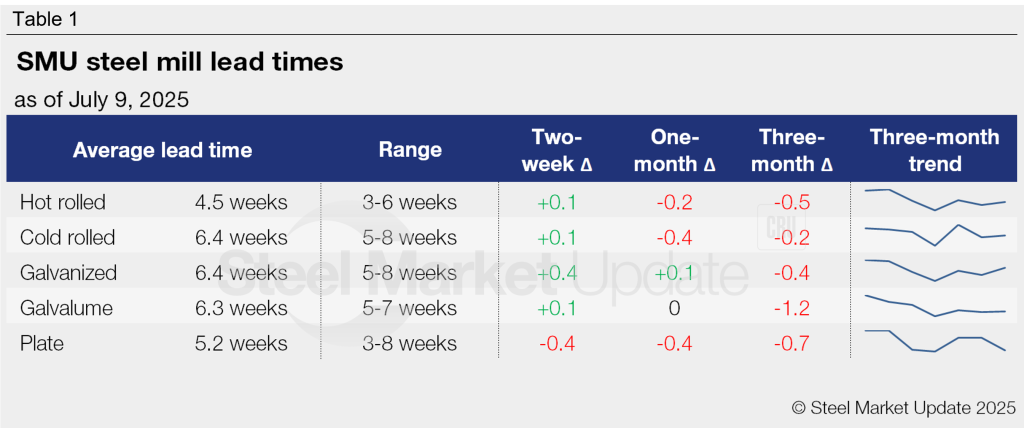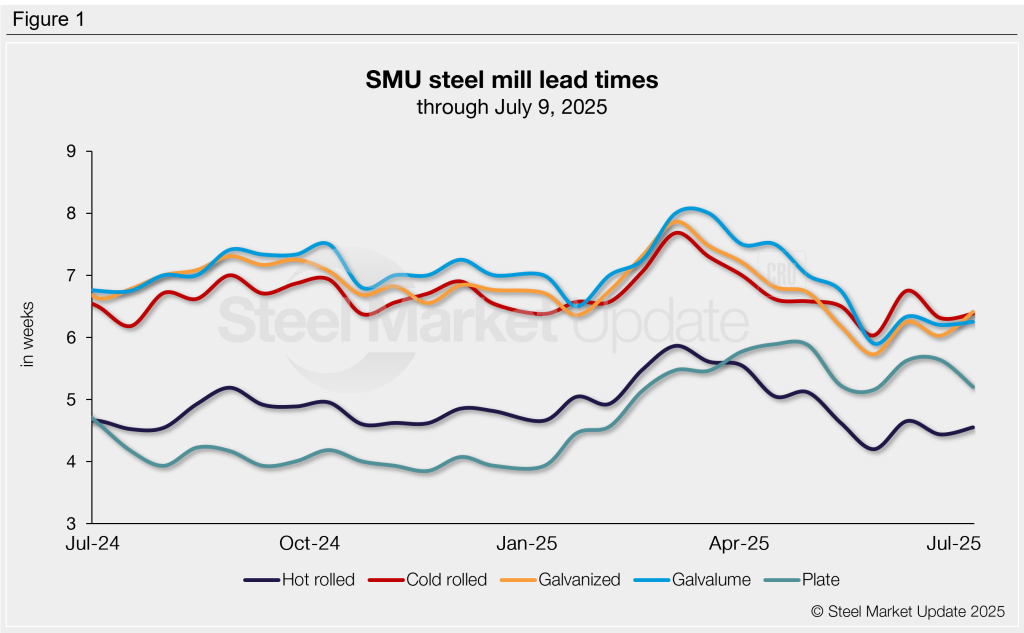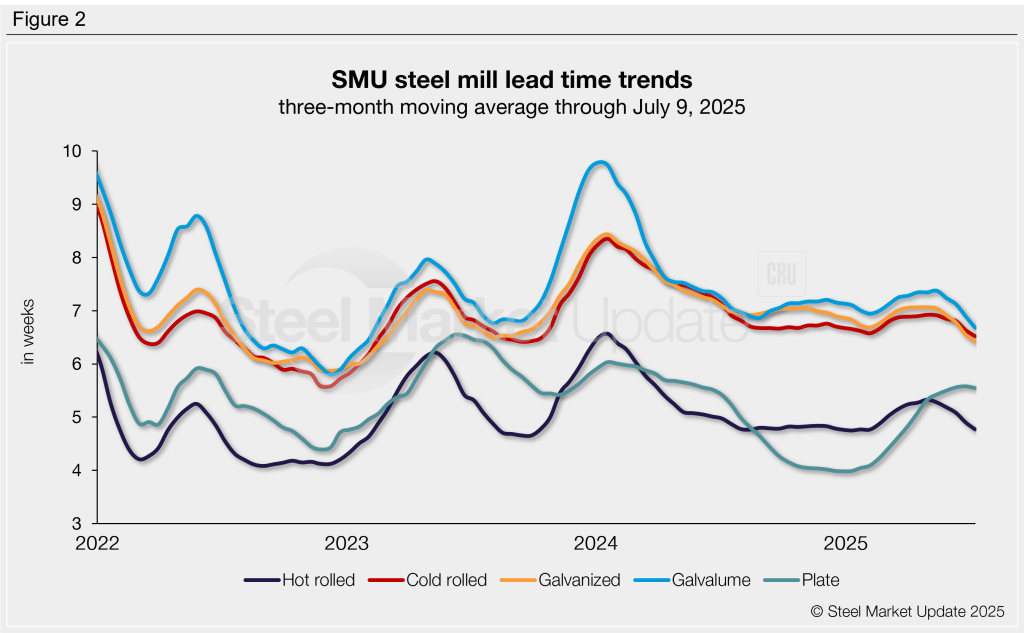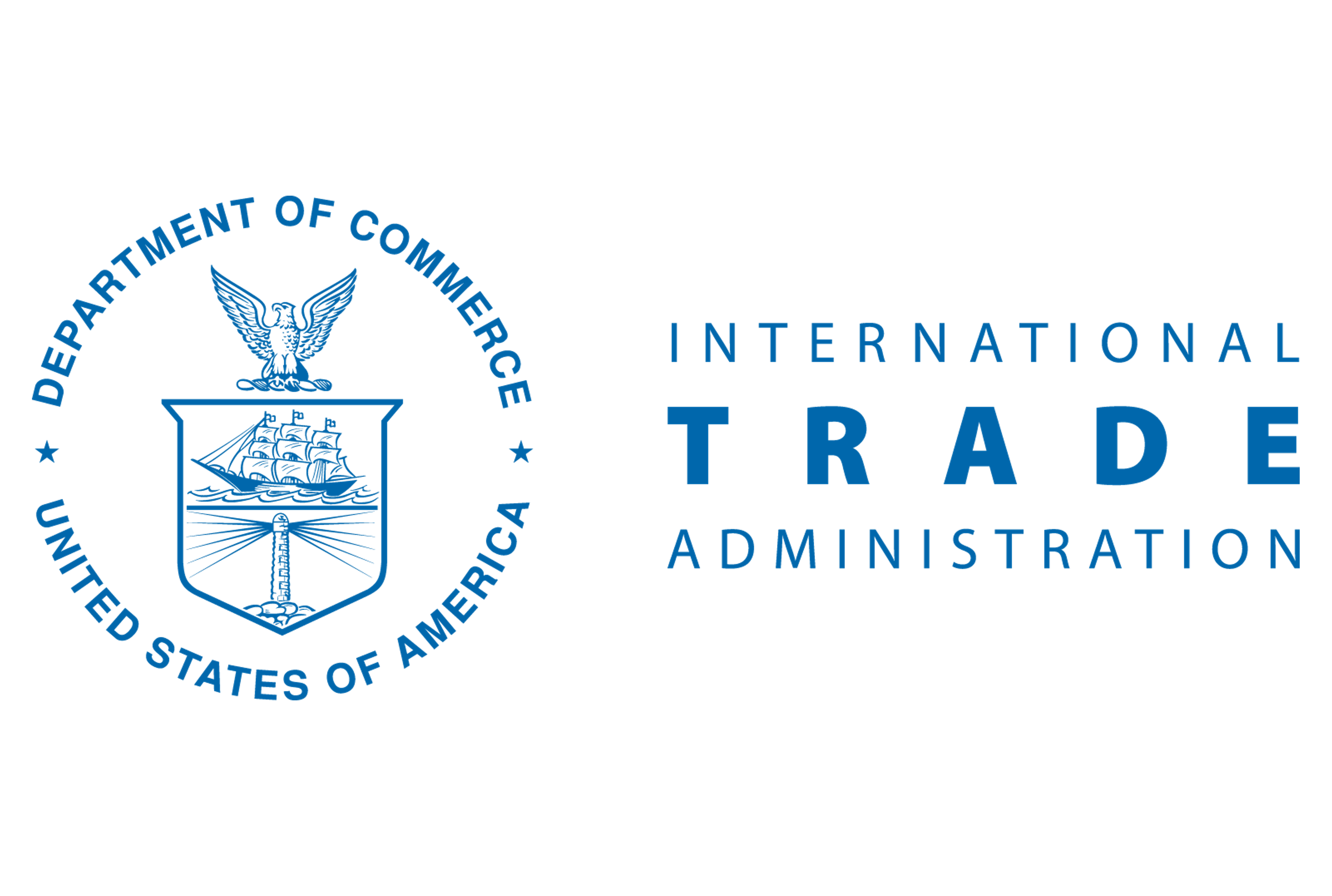Analysis

July 10, 2025
SMU Survey: Sheet lead times stabilize, plate contracts
Written by Brett Linton
Mill lead times for sheet products were steady to slightly longer this week compared to our late June market check, while plate lead times contracted, according to steel buyers responding to this week’s market survey.
The average lead time for hot-rolled coil is now just over four and a half weeks. Production times for cold-rolled and coated products are running just under six and a half weeks. Plate’s average lead time eased to just over five weeks.
Overall, sheet lead times have trended downward since peaking in March, stabilizing in recent weeks. In May, production times on some products reached multi-year lows. Although marginally higher now, sheet lead times remain near some of the shortest levels recorded since late 2023.
Plate production times have bobbed around since peaking in April, falling to a three-month low in May, rebounding in June, and then declining again this week. Plate lead times remain extended compared to levels seen from mid-2024 through early 2025.
Table 1 summarizes current lead times and recent changes by product (click to expand).

Compared to our last market check two weeks ago, most of our lead time ranges changed this week:
- Cold rolled: The shortest lead time considered increased from four weeks to five, while the longest declined from nine weeks to eight.
- Galvanized: The shortest increased from four weeks to five.
- Galvalume: The shortest increased from four weeks to five, while the longest declined from eight weeks to seven.
- Plate: The shortest declined from four weeks to three.

Buyers predict stability
Nearly two-thirds of buyers (64%) anticipate lead times will remain stable across the next two months, down from 74% in late June. Another quarter of buyers (27%) expect lead times to extend, a rate that has grown since late May. The remaining 9% foresee further contractions, consistent with recent surveys.
Here are some of the comments we collected:
“I don’t think they can contract any further; mills will have to take outages if they do.”
“They will slightly extend from the currently fast lead times. Eventually tariff uncertainty will become a little more certain and more normal demand will return.”
“They are beginning to extend. Fall could be interesting.”
“As mill order books fill up, leads times will extend.”
“Lead times extended already and should now hold steady until markets soften.”
“Contracting; we still view domestic capacity as oversupplied (versus the current demand) and expect for more imports to come in once trade deals get finalized.”
Trends
To smooth out fluctuations and better highlight trends, lead times can be calculated as a three-month moving average (3MMA) (Figure 2). All sheet product 3MMAs declined for the fifth straight survey. After holding steady for two months, our plate 3MMA also moved lower this week.
Across the last three months, the average lead times by product were: hot rolled at 4.8 weeks, cold rolled at 6.5 weeks, galvanized at 6.4 weeks, Galvalume at 6.7 weeks, and plate at 5.5 weeks.

Note: These lead times are based on the average from manufacturers and steel service centers participating in this week’s SMU market trends analysis survey. SMU measures lead times as the time it takes from when an order is placed with the mill to when it is processed and ready for shipping, not including delivery time to the buyer. Our lead times do not predict what any individual may get from any specific mill supplier. Consult your mill rep for actual lead times. To see an interactive history of our steel mill lead times data, visit our website. If you’d like to participate in our survey, contact us at info@steelmarketupdate.com.







